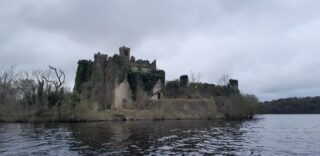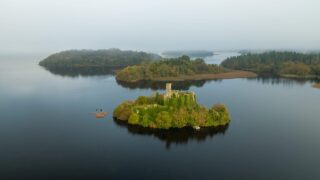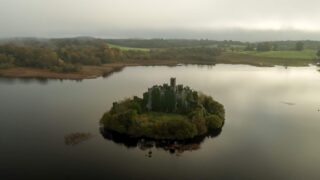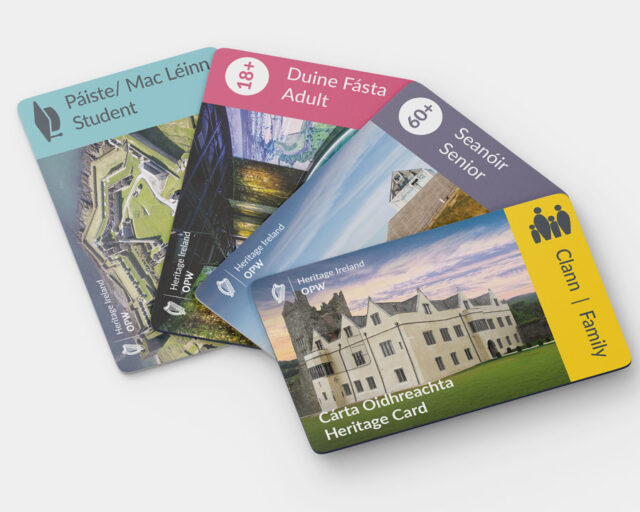Notice
McDermott’s Castle is a National Monument in state guardianship
*No Public Access*
WARNING: It should be noted that these sites are unguided and a level of care and caution should be maintained during all stages of your visit. The Office Of Public Works (OPW) will not be held responsible for any damages, injuries, or losses that occur
McDermott’s Castle
McDermott’s castle is a tower-house located on Castle Island, better known as McDermott’s Rock, in the south-east of Lough Key. It was the stronghold of the McDermott clan, the ruling dynasty of Magh Luirg, north-east Connaught. In 1184 the Rock was hit by lightning, with Duvesa, wife of Conor McDermott, and over one hundred people dying from fire or drowning. This event is detailed in the Annals of Loch Cé. In 1235, Maurice Fitzgerald held the island briefly before being recaptured by Conor McDermott. Fitzgerald, in return, plundered the Rock in 1249. Also in the 13th century, Richard de Burgh, raided and plundered the castle, with Cormac McDermott surrendering. This is the same Cormac McDermott who was forced to provide hospitality for a year to the Hag of Lough Key. Cathal O’Connor, of the Irish noble dynasty and rulers of the Kingdom of Connaught, burned the Rock in 1321. In 1342 the Rock was the last safe haven for Turlough O’Connor, a claimant to the kingship of Connaught. From the beginning of the 15th century, and into the 16th century, possession of the Rock was in dispute. However, by 1540 Rory McDermott and his wife Sadhbh Burke McWilliam were noted to have lavishly entertained their Christmas guests on the Rock. The McDermott’s surrendered the Rock to Cromwell’s colonel Sir John Reynolds. Subsequently, the Rock was granted to the King family. In the 19th century the King family had the tower-house rebuilt as a folly.
Archaeological excavations have mapped the development of the site. The earliest inhabitation was in a Cashel, found inside the present enclosure. The Cashel was sealed by an extensive layer of burning - the 1184 lighting strike. Next built was a high medieval building with drystone walls and subsequently replaced by an identical building. After the medieval buildings came the late medieval tower-house. Arrow slots, a garderobe chute and a blocked up window with external chamfer relate to the medieval tower-house. The 19th century architect John Nash, made further alterations, including a kitchen built on the eastern side of the tower-house, and adding windows to the tower-house, to improve the view north. Artefacts found include a large collection of butchered cattle, sheep and boar fragments, a gaming piece and silver pins.
Protect our Past - Click here to read about the importance of protecting our country’s unique heritage sites
This national monument is protected in accordance with the National Monuments Acts 1930 to 2014
Gallery
Nearby sites to visit
Boyle Cistercian Abbey
Step back into Ireland’s monastic past
Approx. 4.6 km from McDermott’s Castle
Rathcroghan Visitor Centre
Follow in the footsteps of Queen Medb at Connacht’s ancient capital
Approx. 23.5 km from McDermott’s Castle
Parke’s Castle
Walk in the footsteps of planters and Gaels
Approx. 31.3 km from McDermott’s Castle
Carrowmore Megalithic Cemetery
Ireland’s oldest megalithic tombs set in a dramatic neolithic landscape
Approx. 34.5 km from McDermott’s Castle
Sligo Abbey
Where friars’ prayers echo among the ruins
Approx. 34.9 km from McDermott’s Castle
Roscommon Castle-South West Tower
A dramatic and imposing thirteenth Century Norman Castle
Approx. 39.6 km from McDermott’s Castle




